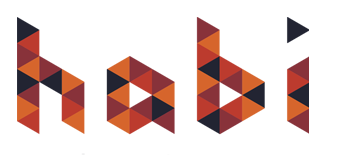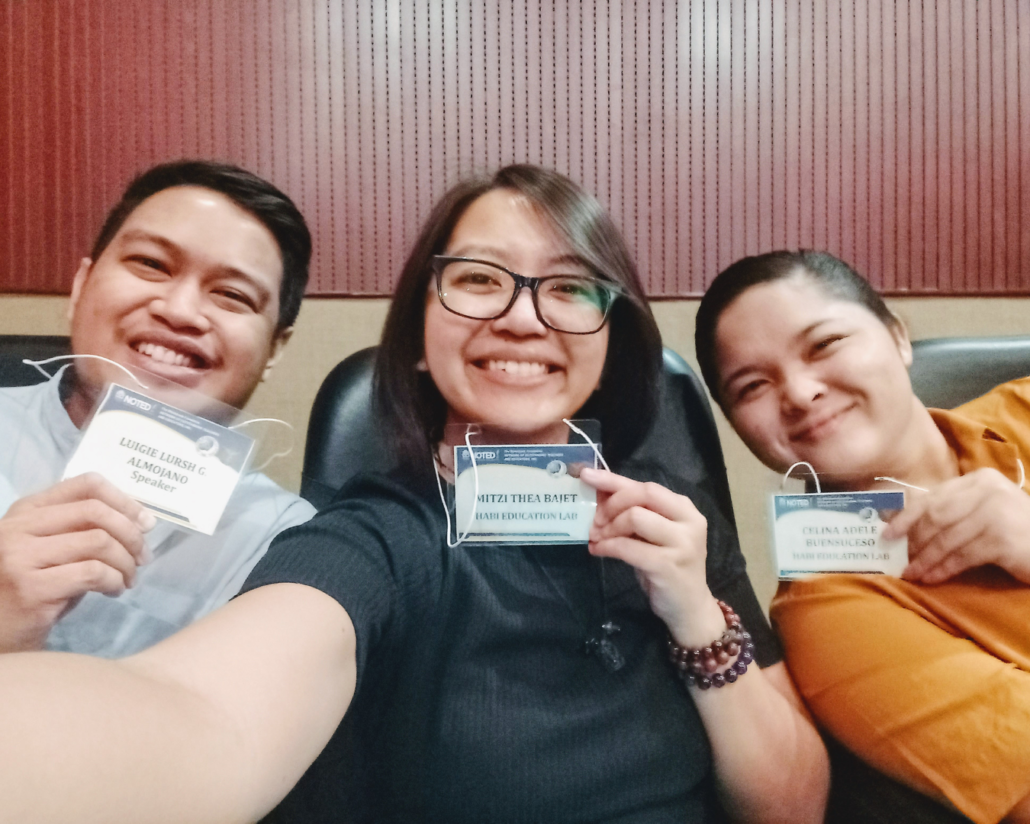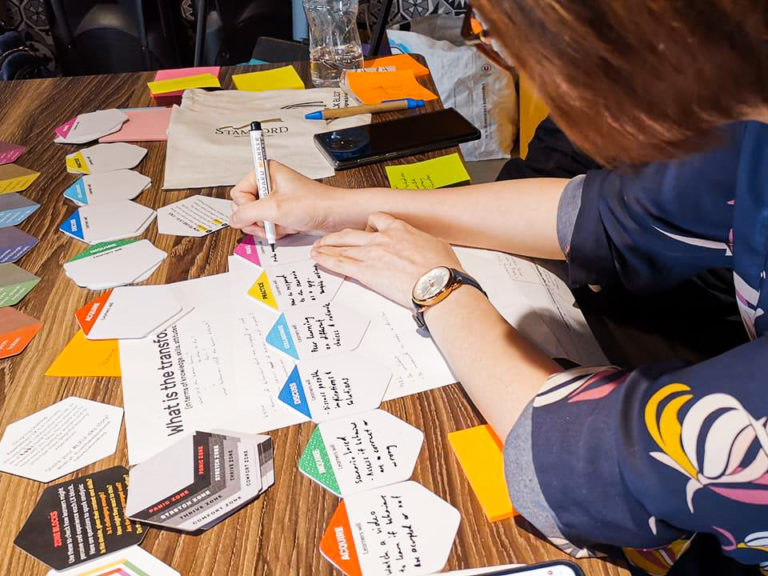Last September 8-9, the Habi team attended the NOTED-hosted conference entitled “Reimagining Education and Leadership: Looking to the Future of Education Institutions.” We thought it would be a good space to reconnect with friends and acquaintances from the education sector, and let them know about the work we’ve been up to. We were given a chance to present our Learning and Development Thinkpiece which aimed to understand the changing nature of L&D topics, techniques, and technologies due to the COVID-10 pandemic. Let’s introduce a learning design lens at the conference, we thought.
During the conference, however, we were reminded that we aren’t alone in this endeavor. Among the group of esteemed school leaders, teachers, and private sector representatives like ourselves, we found 5 persons who already think and act like designers – and we’d love for you to meet them too!
#1 An intentional teacher
Why we need them:
We design better when we consciously work with people on the ground.
What they bring:
- Insight: They have a deep understanding of the people we design for and with
- Impact: They have direct touchpoints and impact on learners
- Intentionality: They design lessons based on what is relevant and needed by our learners and communities
Featured designer:
“Teach not to impress. Teach not to suppress. Teach to make a difference.” – Teacher Rujealyn Cancino
In spaces where cognitive development and mastery of concepts are prioritized, Teacher Rujealyn, a DepEd teacher, uses mindfulness and reflection strategies to nurture both intellectual and emotional growth in her learners.
How to be like them:
- Get to know your learners – their evolving interests, strengths, needs
- Start with why (your intention) when planning your lesson instead of what (your content)
- End your lessons with actionable steps for your learners – where else can they apply what they are learning?
# 2 An action-oriented leader
Why we need them:
Visions are great, and action towards these visions are even better. Designing solutions is a dance between thinking and doing, so we can keep moving forward.
What they bring:
- Direction: They make sure that responsibilities are clear to everyone involved
- Accountability: They share in the responsibility
- Hope: They shed light on wins, what’s working, and the impact designers are making whether big or small
Featured designer:
“While there were many problems posed by the pandemic, there are positive changes from it too.” – Dr. Bert J. Tuga
Dr. Tuga’s term as president of the Philippine Normal University was greeted by the COVID-19 pandemic. He led the university through such challenging times yet successfully led the university by leveraging education gains and innovations from the pandemic experiences.
How to be like them:
- Organize a town hall, a space where every single person in the organization feels like a valued team member
- Get to know your team for their dreams, what they are good at and where their interests lie
- Join your teams and do the busy work with them
 #3 A systems thinker
#3 A systems thinker
Why we need them:
Projects are not enough. We need to design long-term and sustainable education solutions.
What they bring:
- Context: They have the ability to step back and look at the big picture.
- Curiosity: They understand that problem-finding and problem-framing are as important as problem-solving,
- Collaboration: They encourage collaborative work among different stakeholders and across different fields towards a shared agenda.
Featured designer:
“You can’t be too focused on one sector, just on education, because the problem is systemic.” – Boyet Dy
Boyet Dy, currently the Executive Vice President of Metrobank Foundation, Inc., talked about the role of the private sector in identifying and addressing the many challenges of the education sector. He highlighted how these partnerships should not only help our education sector but our communities as well.
How to be like them:
- Map out connections between school-level learning experiences and real-world contexts
- Ask questions that encourage “thinking outside the box” or challenge dominant ideas
- Encourage sharing multiple perspectives when discussing a problem
 #4 A proactive advocate
#4 A proactive advocate
Why we need them:
The problems of the education sector are many and complex. We need as much help we can get.
What they bring:
- Self awareness: They know what they are good and where they can contribute
- Forward momentum: They bring the energy and stamina required to keep the design work moving
- Initiative: They actively seek out opportunities to help
Featured designer:
“Sometimes, you seek it out; more often, you find yourself in a situation where advocacy is the way to go. It depends if we will take the opportunity and act.” – Dr. Josefina A. Tuazon
A retiring nurse and educator when the COVID-19 pandemic was declared, Dr. Tuazon chose to keep active – relearning how to teach in online settings, leading research work on vaccines, mobilizing her networks to transport resources from suppliers to hospitals, caring for patients in her hometown, and caring for her own family.
How to be like them:
- Talk to a teacher and get to know the education community in your barangay
- Look up existing initiatives and organizations that need volunteers like you
- Hone your advocacy skills by working with and learning from other advocates
#5 An informed enabler
Why we need them:
Designing education is never-ending work. We need people who can keep us inspired and healthy during challenging moments.
What they bring:
- Vision: They have a good understanding of the shared vision for education, and remind us of our why when needed
- Resources: They efficiently mobilize resources from materials to nourishment, from funds to collaborators
- Reflection: They provide us with a space to think, to collaborate, to work, and to rest when we need to
Featured designer:
“Kumain na ba kayo? Kumain kayo ha. Magpahinga muna kayo.” – Dr. Ernee Cao
A professor from the UP Diliman Institute of Biology, Dr. Cao was among the organizers of the MBFI-NOTED’s 4th International Conference. Aside from moderating the plenary session for private sector representatives, she was a gracious host throughout the 2-day conference, making sure that guests felt connected and well taken care of.
How to be like them:
- Get to know the people you are enabling – their evolving interests, strengths and needs
- Connect people and resources
- Hold spaces for people to reflect and refuel
Listening to our colleagues’ presentations, we were inspired by the efforts they were leading in their own spaces. Everyone is using their talents to design a unique initiative for the education sector. Individually, they are designing well and doing good work. Though we couldn’t help but imagine… what if, much like drafting a basketball dream team or assembling your own Avengers, we had these persons working together and coordinating efforts towards a shared vision? The conference was a good first step. It got us looking outside ourselves, and listening to one another. A next step we took as an organization was to reach out to our new-found collaborators to see what education futures we can build together.
Just as the conference reminded us to celebrate the good work of our colleagues in the field, we invite you to celebrate yourself and your teams. First, look within. Which of these personas are you? You might be several or all of these personas at once. Second, which of these personas does your team need more of? When working as a team of designers, it’s important to aim your talents well and serve where there is a need. Finally, look at the people around you. Who are the intentional teachers, action-oriented leaders, systems thinkers, proactive advocates, and informed enablers with you? May we know them, learn from them, celebrate them, and be like them.
Happy National Teachers’ Month!
Article by Celina Buensuceso, with contributions from Frank Maraya
Layout and illustrations by Mitzi Bajet







